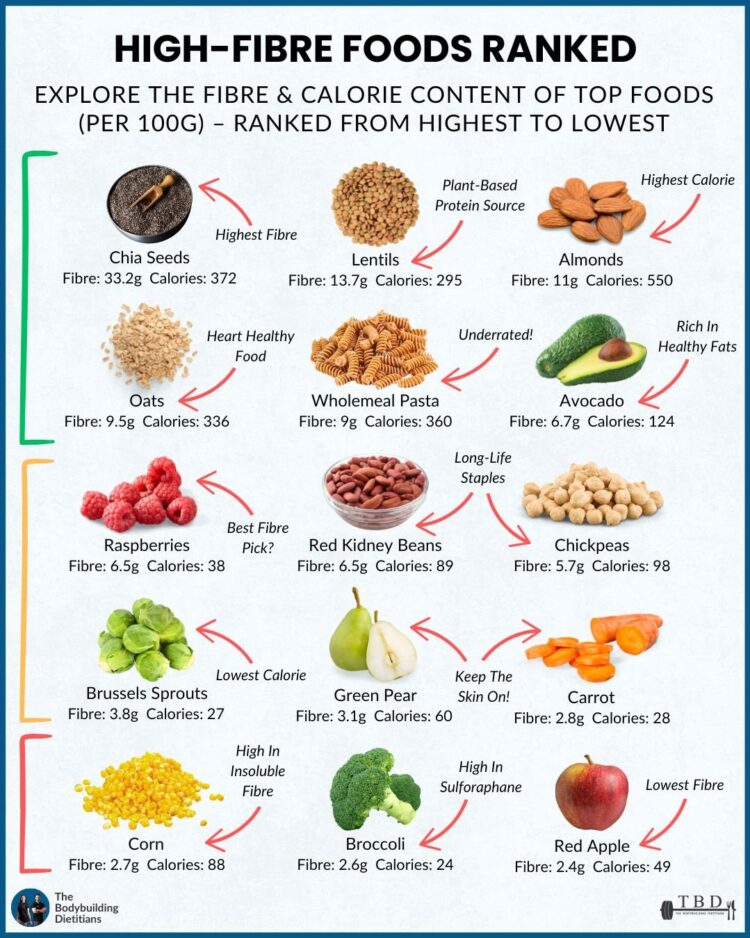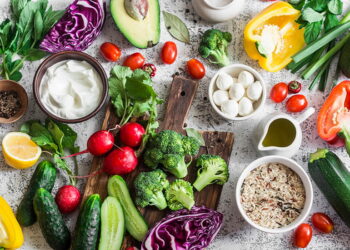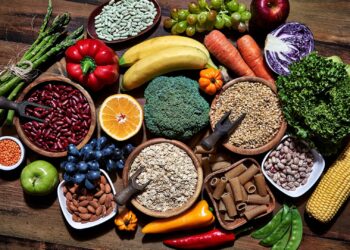ISLAMABAD (Web-Desk) While the internet is filled with tips, charts, and recipes promoting high-protein diets for weight loss, ranging from 30-gram-protein breakfasts to protein-packed shakes, another essential nutrient is often ignored: fiber. Though a high-protein intake does support weight loss goals, fiber plays an equally vital role in promoting not just digestive health, but overall well-being.
Fiber is a type of carbohydrate that the body can’t digest, yet its benefits are far-reaching. Research shows that a high-fiber diet can lower LDL (“bad”) cholesterol, reduce blood pressure, and significantly lower the risk of heart disease. More recent studies also suggest fiber can aid in weight loss and improve insulin sensitivity, making it particularly beneficial for people managing blood sugar levels or battling metabolic disorders.
Despite these benefits, data shows that fewer than 5% of Americans meet their recommended daily fiber intake—approximately 34 grams per day for adult men and 28 grams for adult women. This nutritional shortfall raises an important question: how can we incorporate more fiber into our diets?
In a recent episode of the In Conversation podcast, these questions were explored in depth. Registered dietitian Lisa Valente, MS, RD, joined the discussion to shed light on the topic. A graduate of Tufts University’s Friedman School of Nutrition Science and Policy, Valente also completed her clinical training at Massachusetts General Hospital.
The episode covered the differences between soluble and insoluble fiber, optimal daily intake, and whether fiber deserves its reputation as “nature’s Ozempic.” Listeners also learned about how fiber supplements like psyllium husk compare to whole food sources in terms of effectiveness and health impact. A major focus was on fiber’s ability to combat insulin resistance and support weight management—benefits that mirror those often touted by prescription weight loss drugs.
After the podcast, Valente shared her personal top three high-fiber food picks with Medical News Today readers. First on her list were frozen berries. “Fresh berries are great, but frozen ones tend to contain slightly more fiber and are more affordable. They also last longer, so you can easily toss them into a smoothie, yogurt, or oatmeal without worrying about spoilage,” she explained.
Her second favorite was whole wheat pasta, which she praised for its superior fiber content compared to white pasta. She added that while brown rice has only one gram more fiber than white rice, whole wheat pasta offers a much greater nutritional boost. “It creates a fiber-rich base for dinner, especially when paired with vegetables or lean proteins,” she said.
Valente’s third choice was chia seeds. “I love sprinkling them on oatmeal, but they also work well in chia seed pudding with milk or non-dairy milk and fruit,” she noted. “Chia seeds are incredibly filling and pack not only fiber but also omega-3s and a bit of protein—they’re small but incredibly nutrient-dense.”
For anyone looking to improve their diet, Valente’s advice highlights how simple changes can significantly increase fiber intake—and with it, potentially enhance long-term health.

























